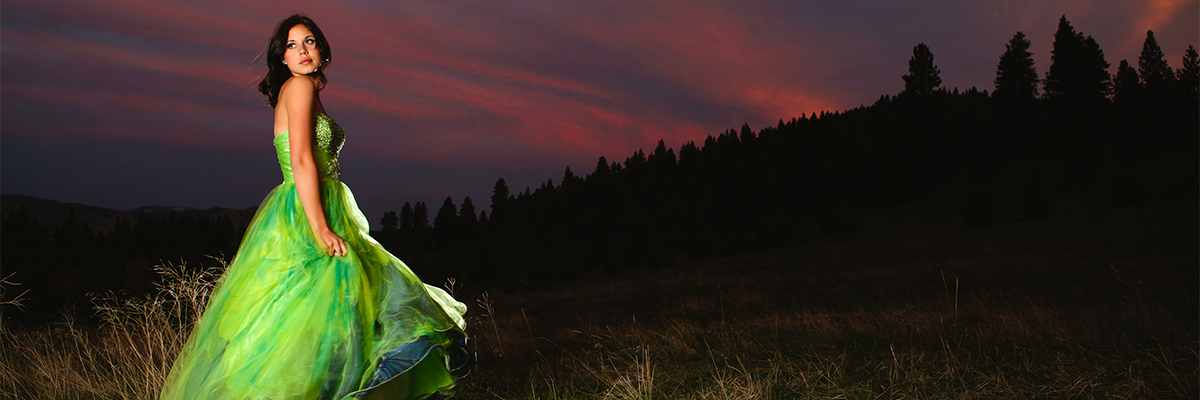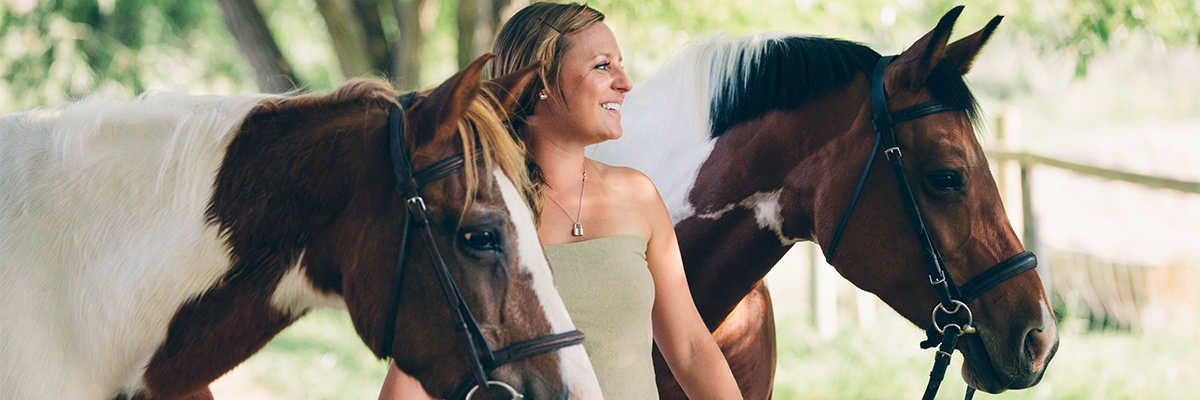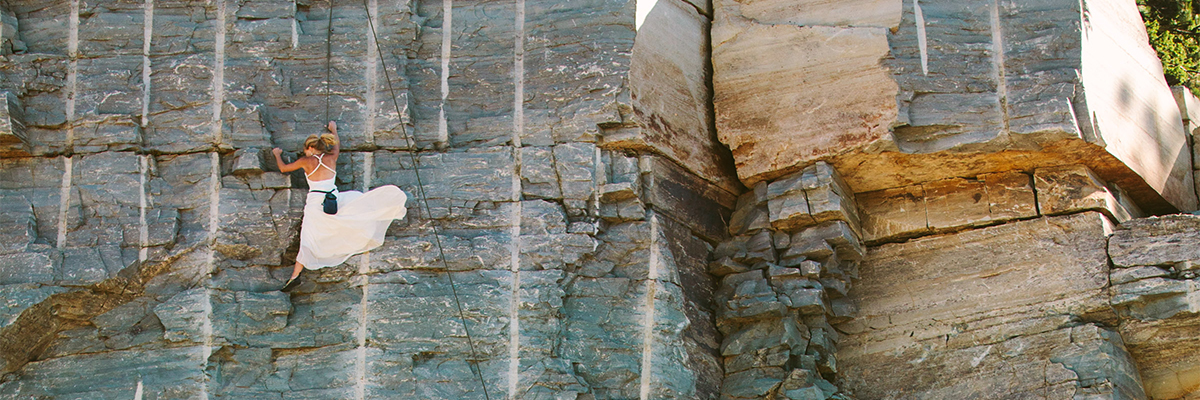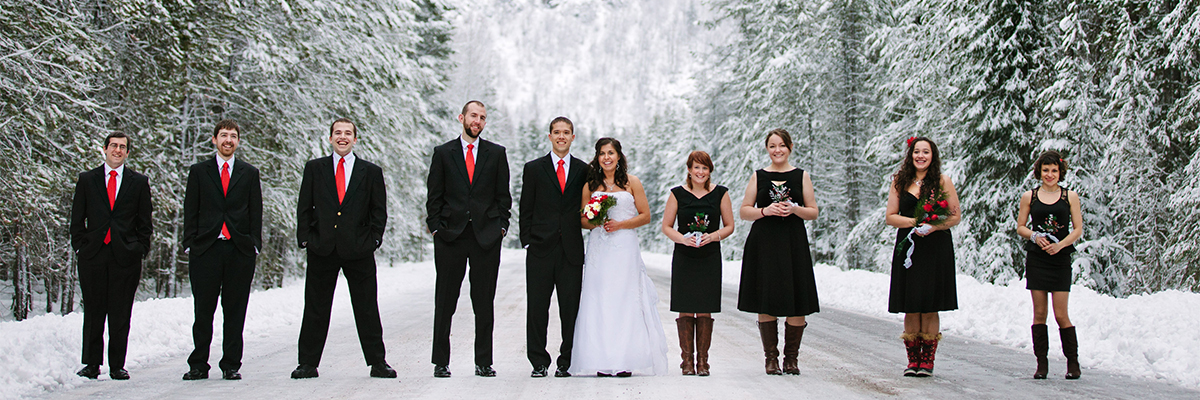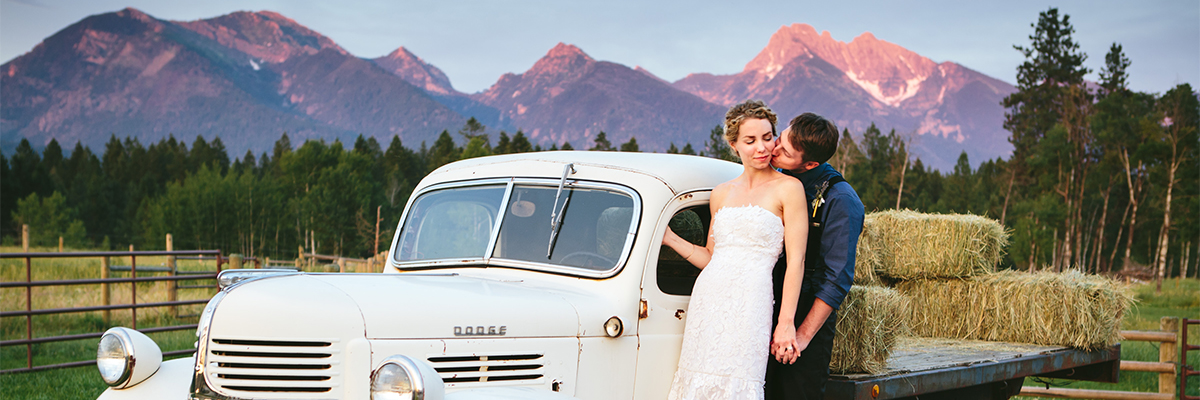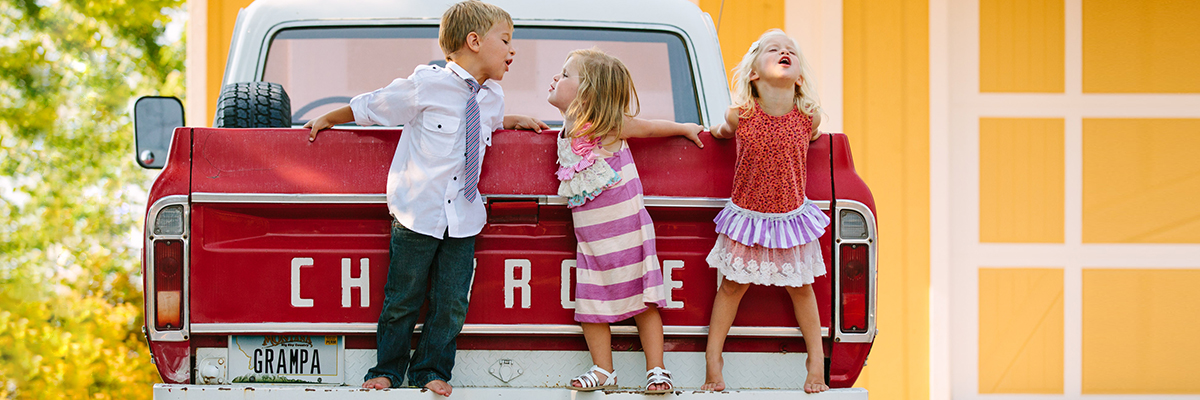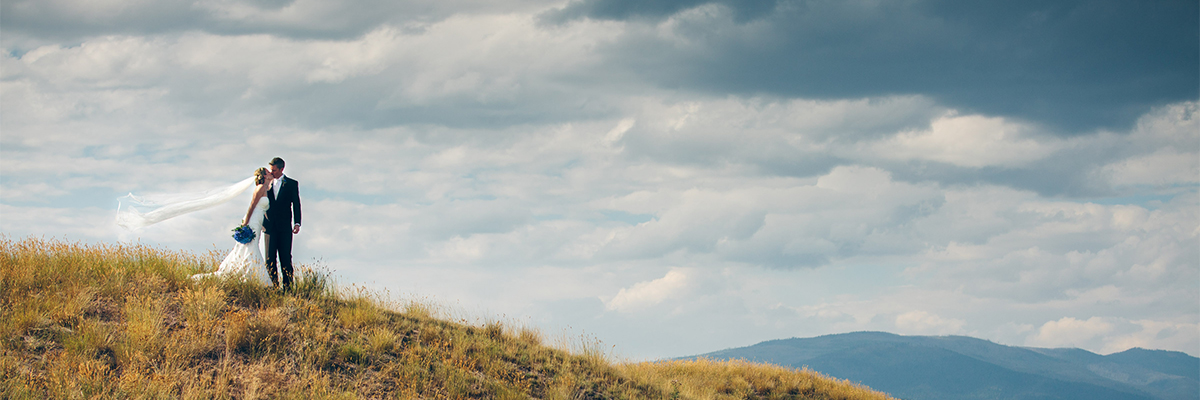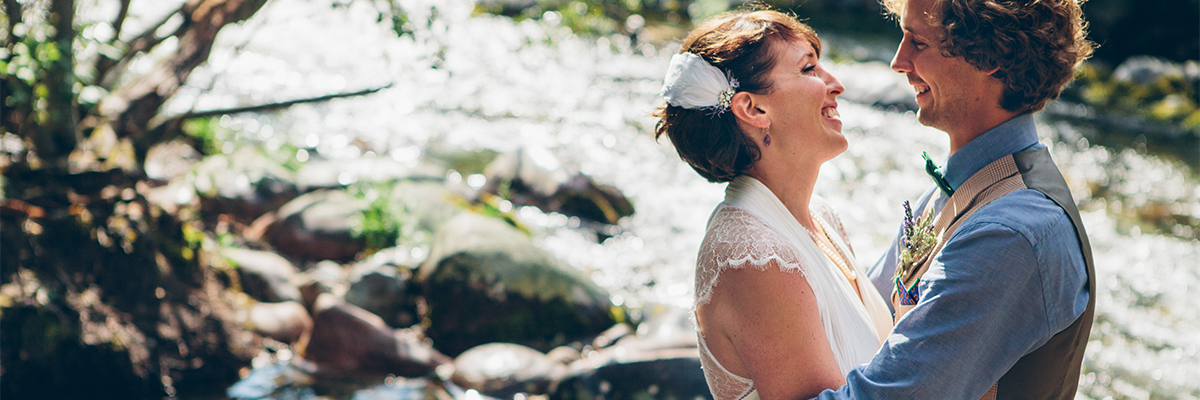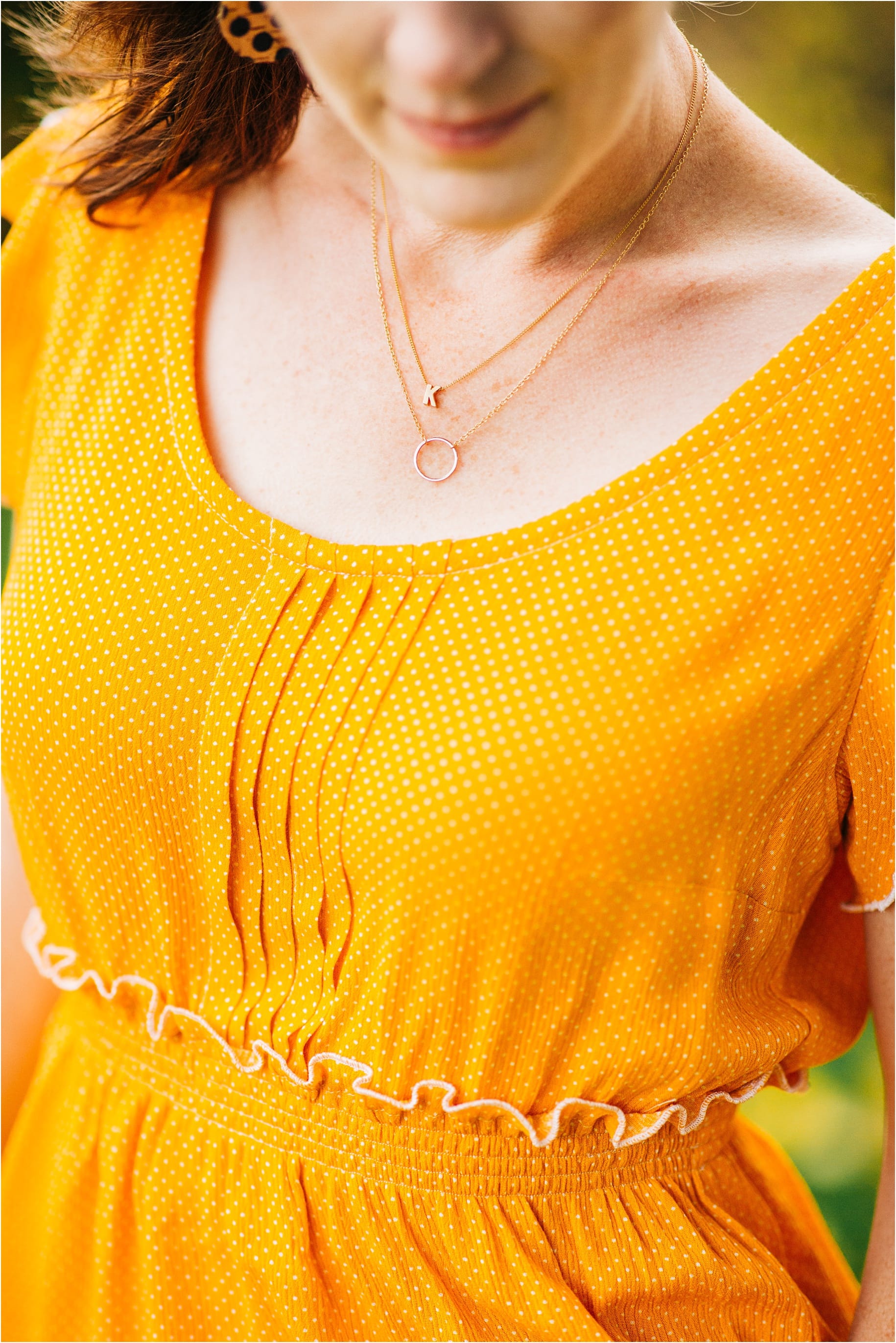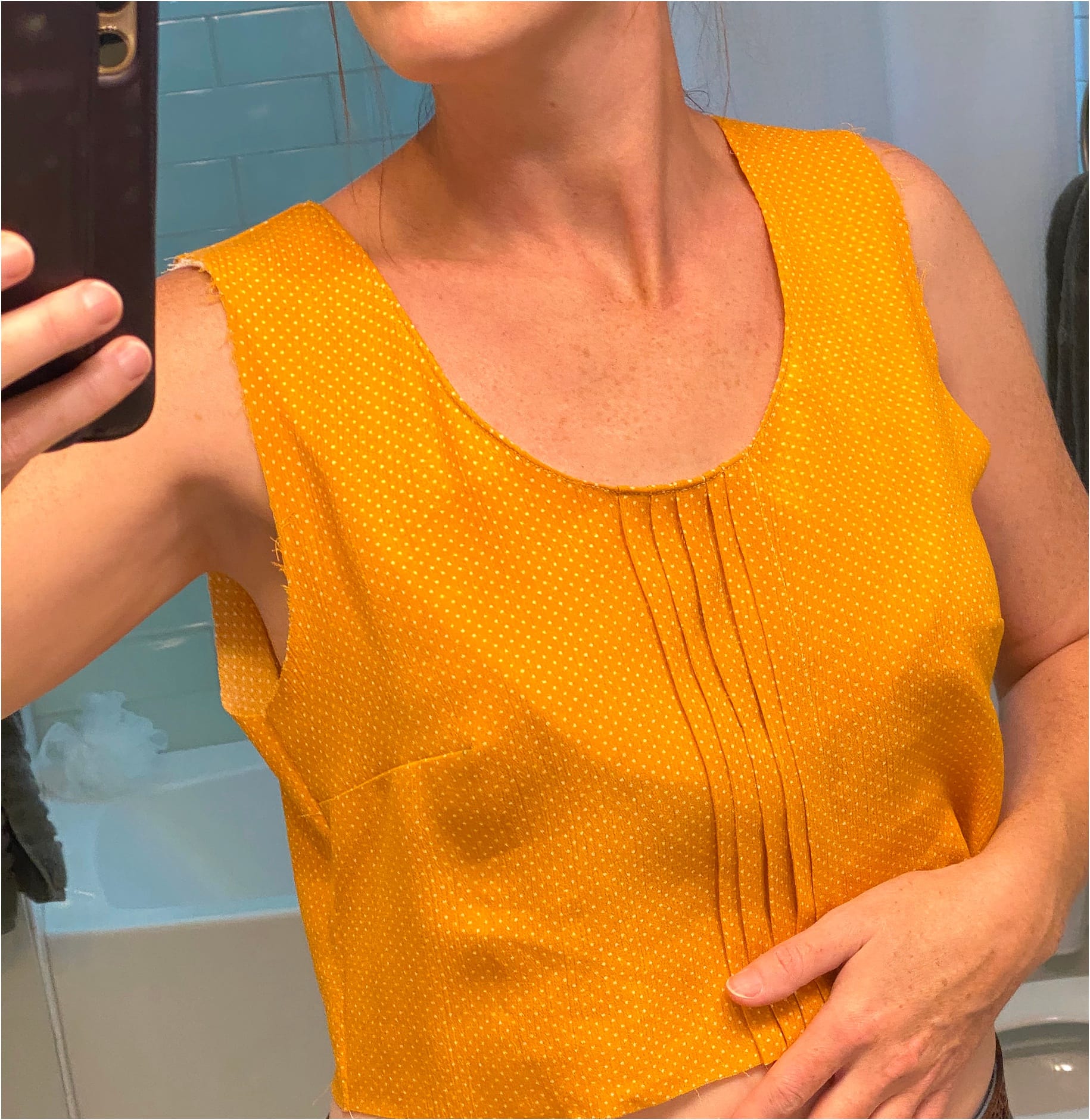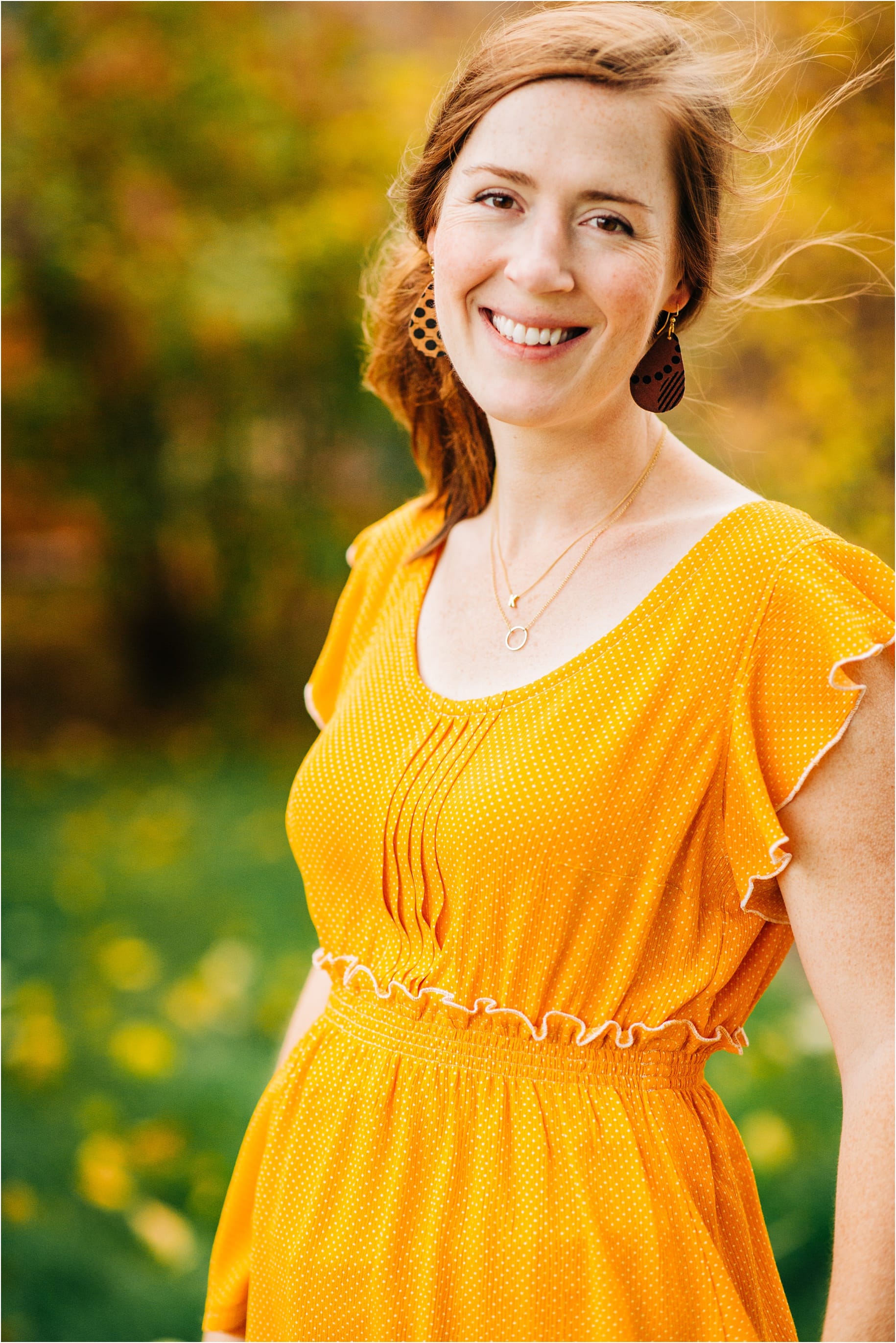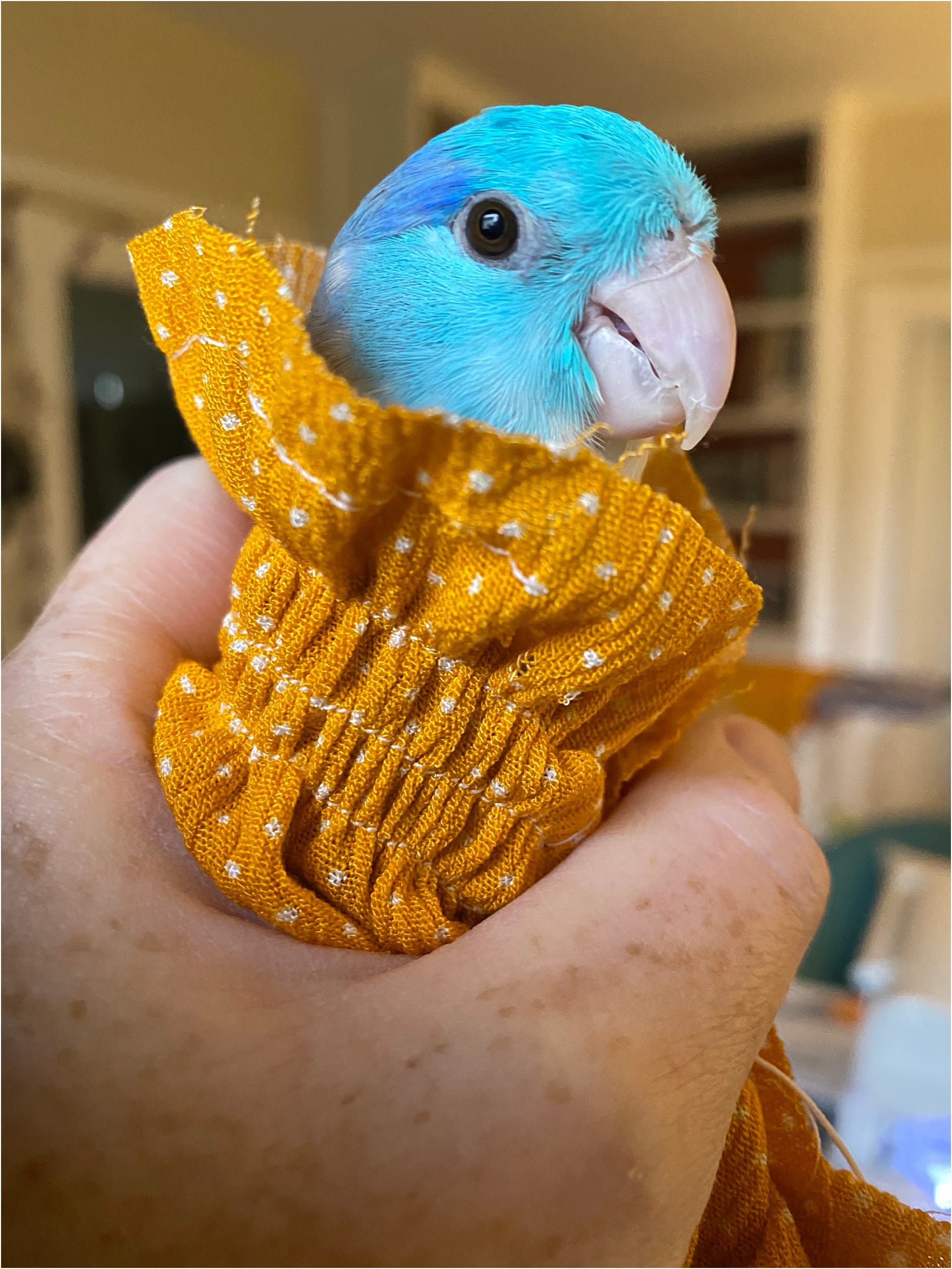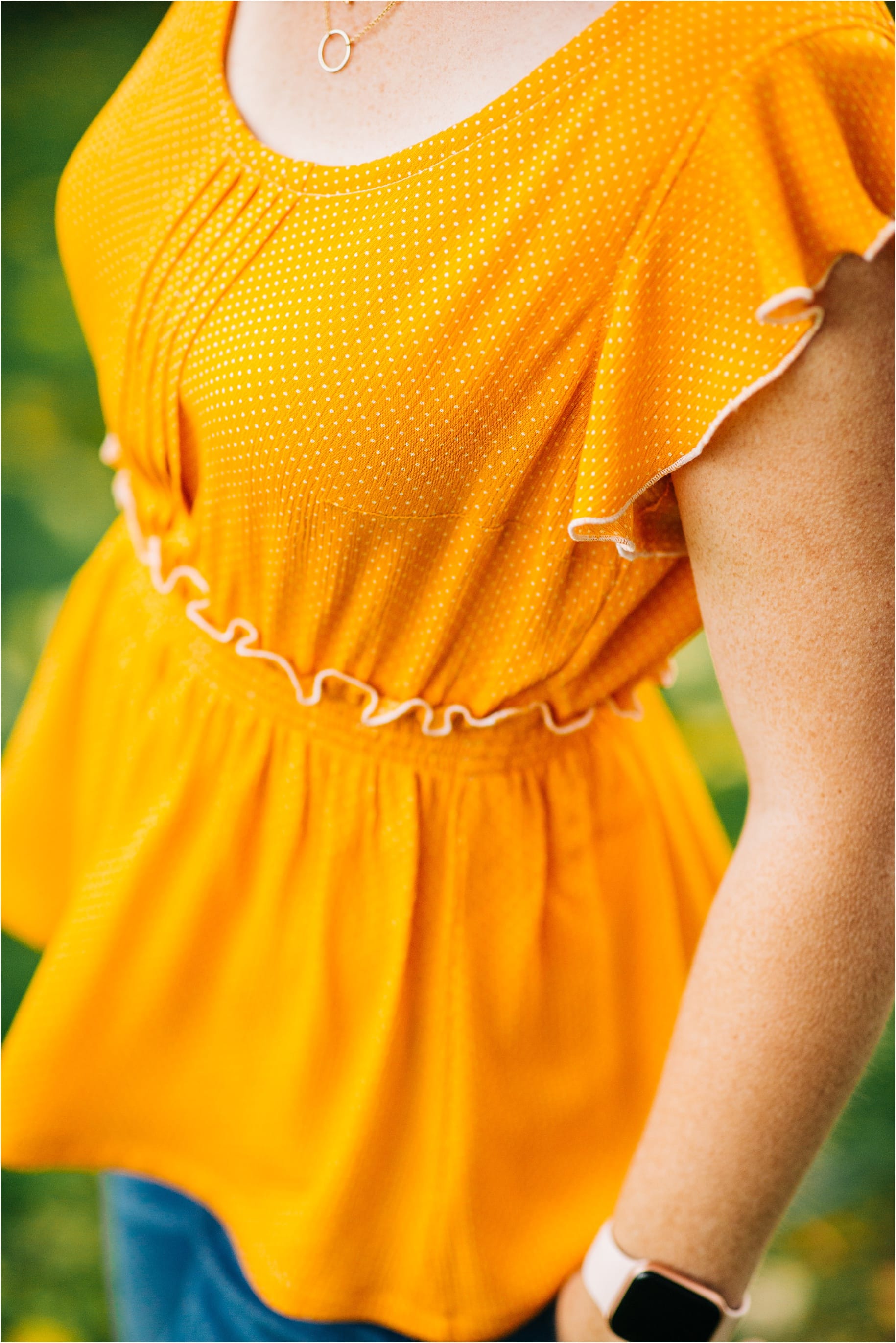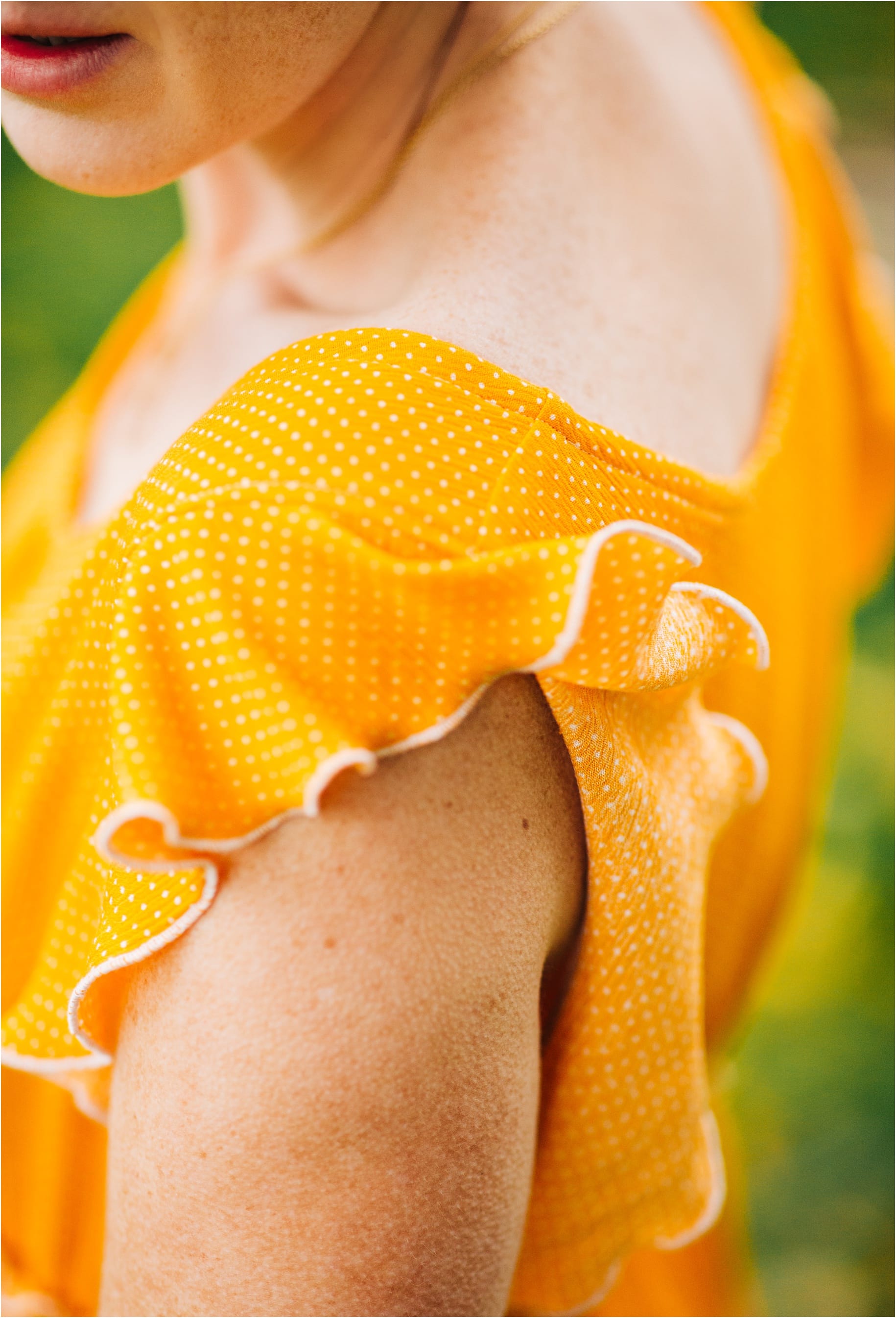This is a bit of a departure from my regular photography client posts that I typically share here. But it’s a huge part of who I am and what I love to do, so here it is on this blog! When I have a bit of free time (which isn’t a whole lot — I’m actively trying to get better at that), one of my favorite things to do is sew! Recently I had the opportunity to make the Pier 7 Top as a promotional sew for New Horizons Designs. It’s been on my wishlist for a while, so I’m glad I finally got to give it a whirl!
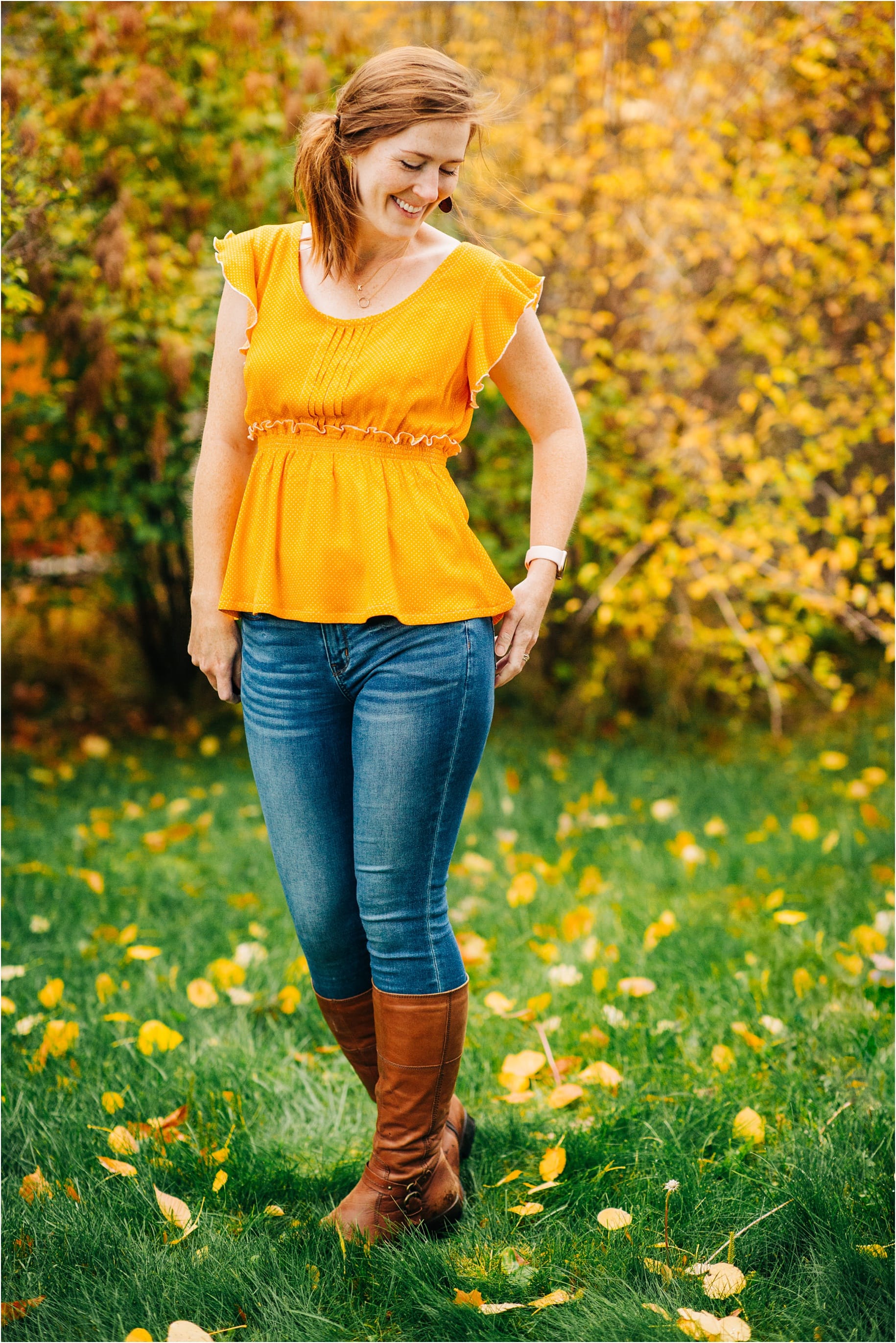 First and foremost, it’s a super cute top. The website describes it as follows:
First and foremost, it’s a super cute top. The website describes it as follows:
The Pier 7 top is named after a popular pier in San Francisco. This light and airy top is beautiful and flattering on many types of figures. It features delicate pintucks on the bodice, soft fluttery sleeves, and the choice of shirring or elastic casing at the waist. Included is a wide range of sizes from 00-26.
I chose a lightweight rayon gauze fabric to make this top, which was the perfect complement to the flowy nature of the top’s design, especially the ruffle at the waistline and the flutter sleeves. The lightweight rayon also allowed for easy shirring at the waistline because it wasn’t too heavy and subsequently didn’t inhibit the shirring.
Also, I specifically chose a lighter color fabric so as to best showcase the details of the top. I feel like a darker colored fabric, or one with a busier pattern, might have camouflaged the details too much.
Overall the pattern instructions were extremely clear, which is something I really enjoy about New Horizons. It was my first time sewing pintucks, and while the pattern was clear in its instructions in this section, I chose a different method to construct the pintucks. This alternate method I used just felt a bit more intuitive to me than what was included in the pattern.
The pattern also recommends using spray starch on lightweight, shifty fabrics to make the pintucks easier to manage. I used spray starch initially, and it is helpful to handle lightweight fabrics. However, I ultimately, ended up sewing a second bodice (which I’ll touch on in a second) and decided not to use spray starch for that second version. Because of this, I’d recommend testing your fabric first when pressing pintucks to see if you really need to use spray starch. It was clear to me on my second try of the bodice that spray starch just wasn’t necessary for this particular fabric, as long as I had a little patience and pressed the fabric carefully and thoughtfully.
Now, onto the reason I started a second bodice in the first place. To be clear, it’s not because the instructions were poor or the pattern is bad — that’s not the case at all. It’s a great pattern and is very clearly written! It was simply all related to the fabric I chose.
In my case, the rayon gauze I used was ever-so-slightly sheer. Because the pattern calls for an interfaced facing at the front and back necklines, due to that double layer of fabric in the facing areas, the facing ended up being visible through the main bodice fabric. Basically, the slight sheerness of the fabric made the edges of the facing really obvious in the areas where the fabric became “doubled up.” The facing and neckline itself looked great and produced a great, clean finish, so I went back and forth whether I should just leave it. But in the end, I decided I’d never wear the top if that facing was visible through the main fabric.
I initially ripped the facing out with the idea that I would just use a French bias binding to finish the neckline. However, after ripping all that facing out, the neckline ended up stretching out and just wasn’t salvageable. So, second bodice it was.
As I mentioned previously, on the second bodice, I skipped the spray starch and just marked all my pintuck lines with a washaway marker, and pressed and sewed following the technique I linked to above — no spray starch needed.
Also, it’s worth noting that for this second bodice, I really wanted to ensure that the neckline and armscyes wouldn’t stretch out. So I stay-stitched each of those curves at 1/8 inch from the edge of the fabric, and I’m eternally thankful I did. It was a great reminder to never skip that step, even if you think it’s a waste of time. It’s definitely not and if I had done it on the first bodice, I might have been able to salvage it. Lesson learned!
I’m fairly certain stay-stitching is the only reason my neckline didn’t stretch and warp again. Speaking of that neckline, for my second go-around, I nixed the pattern’s facing, and instead used bias binding (in the same fabric as the top), and bound it to the neckline, french bias binding style. I think it looks great, the only caveat being that the line of topstitching sews down a small portion of the pintucks at the top of the neckline. This doesn’t bother me at all, though, and I still think the neckline finish with the binding looks neat and professional. And most importantly, it doesn’t gape! (The first bodice attempt did gape because the neckline stretched.)
I loved doing the rolled hem on the waistline and the flutter sleeves. It adds such a delicate touch and I really am smitten with that feature of this pattern! I did the rolled hem on my serger, which took no time at all.
The next thing to tackle was the shirred waistline. The pattern offers instructions for either a gathered waistline using an elastic casing, or the shirring technique. I’d never done shirring before, and as someone who loves trying new techniques, I decided I might as well give it a go! And I’m so glad I did. Can I just shirr all the things now? 😍
It does require some patience and practice, so definitely give it a trial run on some scrap fabric beforehand. I watched a LOT of videos prior to messing around with it and practiced a fair amount before even touching the actual bodice of the top. I’m so thankful I took that time to really get used to how my machine behaved with elastic thread in the bobbin.
It’s important to determine the correct stitch length, too, so you don’t “over-shirr” your fabric and make your waistband accidentally too tight. A good rule of thumb — a longer stitch length means more space between the gathers, which results in a narrower piece of fabric once you’re done. A shorter stitch length means less space between the gathers, which results in a larger piece of fabric once you’re done. In my case, I needed to choose a shorter stitch length.
For my machine, I decreased my stitch length to 1.8 (it’s normally 2.5) but I didn’t adjust my stitch or bobbin tension at all. (Some tutorials suggest adjusting your bobbin tension, but that seemed somewhat terrifying so I skipped it, and was absolutely fine without that adjustment on my particular machine. I sew with a Singer Quantum Stylist 9960.)
In my experience, though, it is important to find the sweet spot with how you seat the elastic thread in your bobbin casing. I kind of had to really tug mine into the tension doohickey so that it wouldn’t pop loose. This felt kind of weird to me, and it did sort of make a strange tiny whining noise while sewing. But it didn’t damage my machine at all or mess up the bobbin tension when I went to sew with regular thread in the bobbin again, so I’m counting it as a win.
Also, don’t forget to steam the heck out of your shirring after you’ve finished that step! It really helps to “shrink” the shirring into place and gather the waist perfectly. And it’s fun to watch! (Perhaps I’m easily amused, though.)
After completing the shirring step I went to try on the top and squealed with excitement. It was SO beautiful and delicate! And the shirred waist was extremely comfortable – way comfier than elastic casings I typically use in patterns that require it.
The only thing I needed to adjust was the length of the top. The “bodice skirt,” as it’s called in the pattern, was just too long for my body’s particular proportions and made my legs look too short. So I trimmed off 3 and 3/4 inches from the bottom of the top to make my legs appear longer. Side bonus — even though I cut off that much from the bottom of the top, it still maintains a beautiful, loose drape and delicate movement, which is part of the appeal of this top.
The last thing I needed to do was hem, and voila! All finished!
Despite having to make that second bodice, I really do love this top. It’s so feminine, light and exceptionally pretty. I’m currently thinking of ways to elongate it into a dress, too! (If you are interested in that option as well, but don’t want to draft it on your own, New Horizons has a dress version on their site — with a long sleeve option!)
And, even though this top is generally thought of as a spring or summer piece, I think it would be so cute for colder months when celebrating holidays, etc., or under a loose cardigan. Or, just on its own if you run warmer than I do!
This pattern solidly gets a “love” from me, and will definitely be used again!
I hope that helped a few of you, and, in the meantime, happy sewing!
Cheers,
-Kristine
{ Book a Session with Kristine }….{ Join the Facebook page }….{ Visit the Website }
